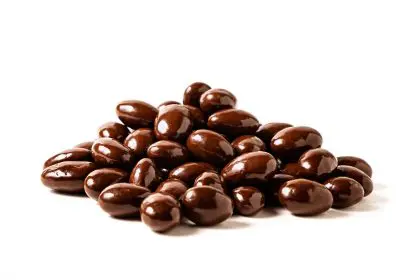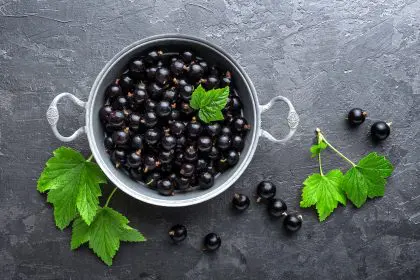The foods that brighten our pantries and delight our senses are undergoing a major transformation as the federal government pushes manufacturers to abandon synthetic food dyes in favor of natural alternatives. The Department of Health and Human Services (HHS) and Food and Drug Administration (FDA) announced on April 22 a comprehensive plan to phase out petroleum-based food colorings, prioritizing alternatives derived from plants and other natural sources.
The timeline for color transformation
The FDA has established an aggressive schedule for this transition, planning to revoke authorization for Citrus Red No. 2 and Orange B within months. More significantly, the administration is urging food manufacturers to voluntarily eliminate six widely used synthetic dyes by the end of 2026: Green No. 3, Red No. 40, Yellow No. 5, Yellow No. 6, Blue No. 1, and Blue No. 2.
Red No. 3 faces an expedited ban due to its connections to cancer in animal research. This dye appears in numerous products from cereals to candies, making its removal particularly impactful for familiar brands.
Seven ways this shift will affect consumers
- Visual differences – Natural dyes typically produce more muted, less vibrant colors than their synthetic counterparts. Your favorite rainbow-colored cereals and candies may appear noticeably different on store shelves as manufacturers make the switch.
- Ingredient label changes – Look for new colorants on ingredient lists such as “spirulina extract” (blue), “beet juice” (red), or “turmeric” (yellow) replacing familiar terms like “Red 40” or “Yellow 5.”
- Potential price increases – Natural colorants often cost more to source and process than synthetic alternatives. These increased production expenses may translate to slightly higher prices for colorful processed foods.
- Reduced allergic reactions – Some consumers experience allergic responses to synthetic dyes, particularly Yellow No. 5. Natural alternatives may reduce these reactions, though plant-based dyes can also trigger allergies in sensitive individuals.
- Shorter shelf life – Natural colorants tend to be less stable than synthetic versions, potentially resulting in color fading over time or when exposed to heat and light. Products may need improved packaging or shorter “best by” dates.
- Regional variations – As manufacturers test different natural color solutions, you might notice regional differences in product appearance as companies determine which natural dyes perform best in various formulations.
- Reformulation beyond colors – The shift may prompt manufacturers to reconsider other ingredients, potentially leading to broader reformulations that could affect taste and texture.
The science behind the change
Health concerns have fueled this transition away from synthetic dyes. Research suggests possible connections between artificial colorants and behavioral issues in children, including attention deficit hyperactivity disorder (ADHD). Some studies have also identified allergic reactions and other potential health risks associated with particular synthetic dyes.
The FDA is accelerating approval processes for several natural alternatives to replace the synthetic options being phased out:
Calcium phosphate will serve as a whitening agent, already recognized as safe for consumption. Galdieria extract provides a vibrant blue hue derived from algae and is currently completing FDA approval procedures. Gardenia blue, widely used in Asian food products but not yet authorized in American markets, offers another plant-based alternative. Butterfly pea flower extract, known for its fascinating color-changing properties based on acidity levels, rounds out the colorful natural options gaining traction.
What “natural” really means for your health
Despite the move toward natural ingredients, nutrition experts caution against viewing colored foods as suddenly healthier. The dyes themselves—whether natural or synthetic—appear in such small quantities that they have minimal impact on overall nutritional value.
The primary benefit comes from reduced exposure to potentially harmful synthetic chemicals rather than added nutritional advantages. Consumers seeking improved diets should continue prioritizing whole foods like fruits and vegetables rather than processed items containing any type of coloring.
Challenges of natural colorants
Natural does not automatically mean problem-free. Colorants derived from plants and other living organisms can introduce food safety challenges if not properly processed. Bacterial contamination remains a concern with some natural dye sources, requiring stringent safety protocols during production.
Additionally, natural dyes may perform differently in various food applications. Heat stability, pH sensitivity, and interactions with other ingredients can affect their performance. Food scientists and manufacturers face significant technical challenges in creating natural color systems that match consumer expectations for appearance and stability.
Historical perspective on color changes
This is not the first time the food industry has attempted to move away from artificial colors. Previous efforts saw limited success when consumers rejected products that looked different from what they expected. Companies often reversed course after sales declined, returning to synthetic dyes to meet consumer demand for vibrant, consistent colors.
The current initiative differs in its government-led approach with specific timelines and regulatory pressure. The food industry now has greater incentive to overcome technical hurdles and educate consumers about the appearance changes resulting from natural colorants.
The visual psychology of food
The appearance of food profoundly influences consumer perception and enjoyment. Humans rely heavily on visual cues when selecting and consuming food, with color often signaling flavor, freshness, and quality. The vibrant hues created by synthetic dyes have become deeply embedded in consumer expectations for certain products.
As manufacturers transition to natural alternatives, they must manage this psychological component carefully. Marketing campaigns highlighting the benefits of natural colors may help prepare consumers for visual differences in familiar products.
Beyond color: potential broader impacts
If this initiative succeeds in reducing artificially colored processed foods, it could contribute to broader public health benefits. Foods containing synthetic dyes often rank high in sugar, salt, and highly processed ingredients. Reduced consumer interest in artificially colored foods might encourage healthier eating patterns overall.
The transition also reflects growing consumer demand for cleaner labels and more natural ingredients. Food manufacturers increasingly recognize that many consumers prefer recognizable ingredients derived from natural sources rather than chemical compounds with unfamiliar names.
As food companies navigate this significant transition, consumers will ultimately determine its success through their purchasing decisions. The future of food coloring—and potentially the broader processed food landscape—depends on whether shoppers embrace these more natural, if visually different, alternatives at the grocery store.












